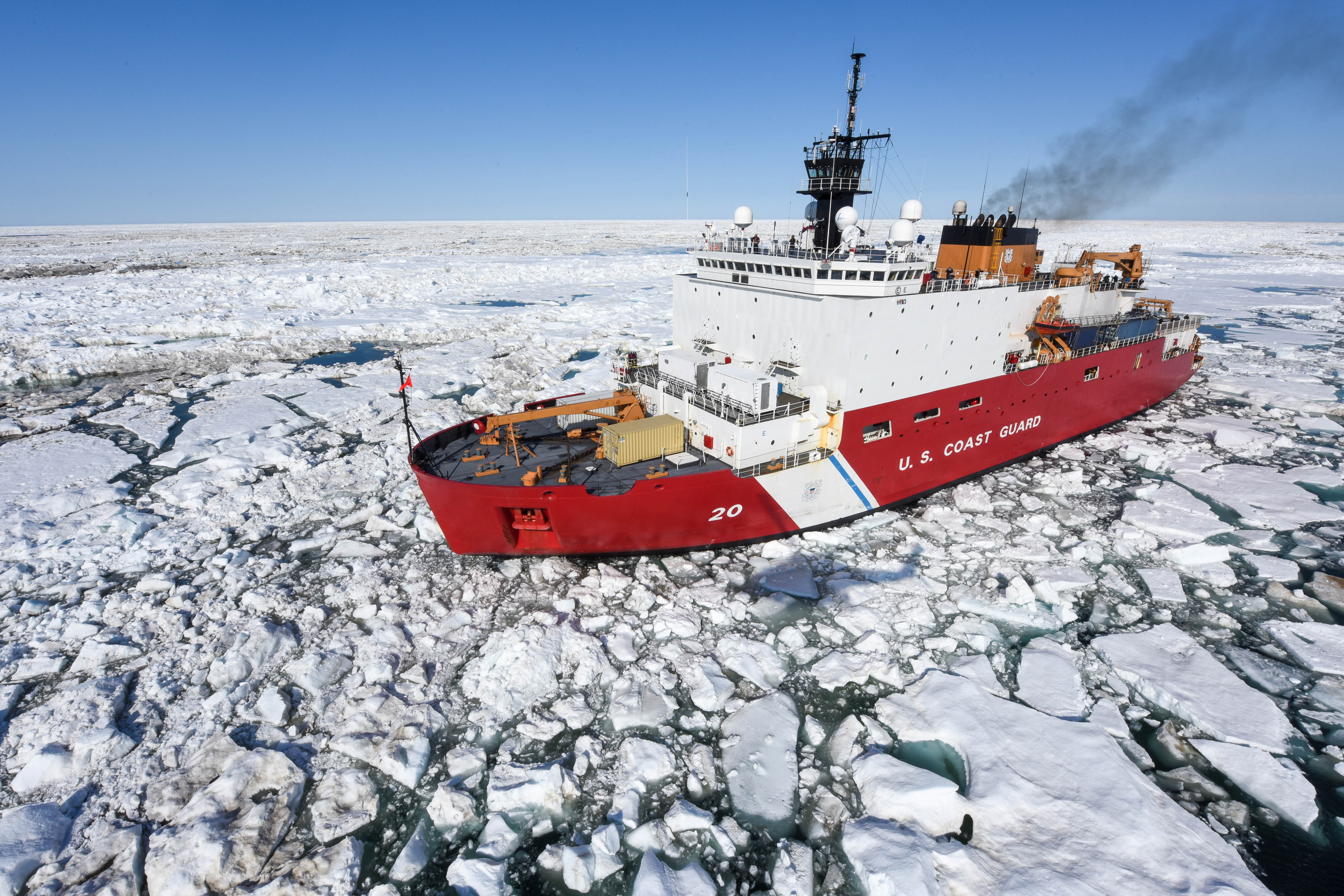Funding for a long-awaited US heavy icebreaker is target of House GOP cuts
The House version of the 2019 fiscal year Homeland Security budget, is set to cut $750 million in proposed funding for a new icebreaker — diverting some of it to fund a border wall, and increase the Immigration and Customs Enforcement.

On Wednesday, the U.S. House of Representatives’ Appropriations committee approved its Homeland Security Appropriations Bill for fiscal year 2019 — and funding for a new heavy polar icebreaker is notably absent from the bill, critics say.
Several Democratic representatives outlined their objections to the cut in a letter to the committee leaders earlier this week, arguing that it will “place our nation at a distinct economic, geopolitical, and national security disadvantage for years to come.”
A floor vote on the appropriations bill isn’t yet scheduled, with members departing for August recess.
Efforts to update the Coast Guard’s icebreaker fleet date back years. In June 2013, a Homeland Security Department document recommended that the agency add three heavy and three medium icebreakers. After a 2015 visit to Alaska, Pres. Barack Obama promised additional spending and a fast-tracked timeline for new icebreakers. Pres. Donald Trump made similar promises in a commencement address at the Coast Guard Academy last year.
Over the past five years, the plan to update U.S. icebreaking capacity has also gained bipartisan support in Congress. Pres. Trump asked for $750 million for an icebreaker in his Supplemental Budget Request this year, and the Senate version of the appropriations bill cleared the committee last month.
After the Senate bill passed, Alaska Sen. Lisa Murkowski, who has long championed the cause of a revitalized U.S. icebreaker fleet, tweeted, “The importance of icebreakers increases as sea ice diminishes and marine traffic increases, especially since the Arctic is becoming increasingly desirable for exploration of oil, gas and minerals.”
I’m pleased that full funding for the design/construction of the 1st heavy polar icebreaker was included in Senate Approps Cmte’s Homeland Security FY19 bill since 3 countries announced their commitment to building new icebreakers (China, Canada, & Norway) https://t.co/A6mZThnNIY
— Sen. Lisa Murkowski (@lisamurkowski) June 27, 2018
Currently, the United States has two polar-capable icebreakers: the 18-year-old medium icebreaker, Healy, and the 42-year-old Polar Star, which is well past its 30-year life expectancy and recently broke down on a mission to Antarctica.
Having only two icebreakers is particularly risky, because “if one gets in trouble, we don’t have self-rescue capability,” Adm. Paul Zukunft, the former commandant of the Coast Guard, said recently.
Russia, in contrast, has 41 icebreakers in its fleet, and plans to launch two ice-capable corvettes armed with cruise missiles.
In addition to cutting the U.S. icebreaker funding, the House bill would also cut $10 million in research and development funding of the Coast Guard — the primary U.S. military force in the Arctic.
In the most recent version, some of those funds would instead be directed south — $4.9 billion for a border wall, and $328 million for the Immigration and Customs Enforcement budget.
News of the House bill’s cuts came as a surprise to John Farrell, executive director of the U.S. Arctic Research Commission.
“It would be unfortunate to see this budget cut,” Farrell told ArcticToday. “Instead, we prefer the President’s budget version, because it supports a significant step towards recapitalizing our icebreaker fleet.”
“These vessels are instrumental in supporting scientific research at both ends of the world,” he said.
Calls and emails to Reps. Rodney Frelinghuysen and Kevin Yoder, Republican congressmen who chair the House Appropriations committee and Homeland Security Department subcommittee, respectively — as well as to Rep. Don Young, Alaska’s sole Representative in the House and previously a vocal supporter of plans for new icebreakers — weren’t immediately returned.
In response to the House committee vote, Murkowski released a short statement:
“In our Homeland Security FY19 Appropriations bill here in the Senate, we included funding to fully build our first polar strength icebreaker in almost fifty years. It is exceedingly unfortunate that the House does not recognize the sense of urgency, as we deal with Arctic priorities.”
A Coast Guard spokesperson also underlined previous support for the icebreaker program in Congress, and said he hoped the final appropriation bill would see the funding restored.
“Funding in FY19 is crucial for maintaining industry engagement and ensuring that the timeline for this critical program remains on schedule,” said Chad Saylor. “Coast Guard Cutter Polar Star is continually becoming more challenging to maintain and new Polar Icebreakers are essential to ensure we can assert our national sovereignty in the remote Polar Regions.”
This is a developing story. Check back for updates.